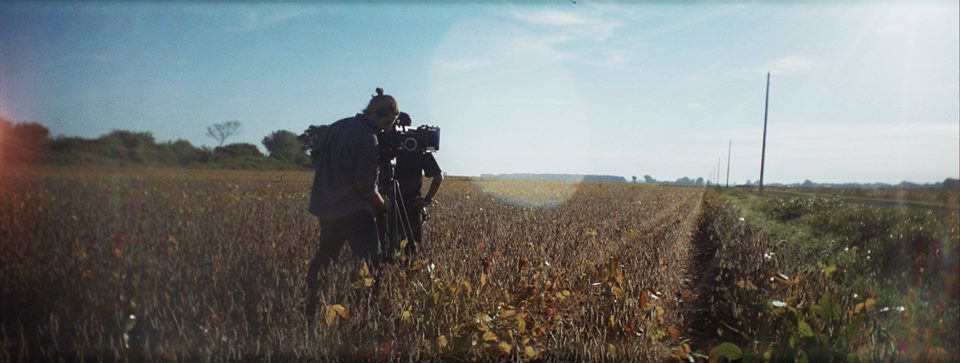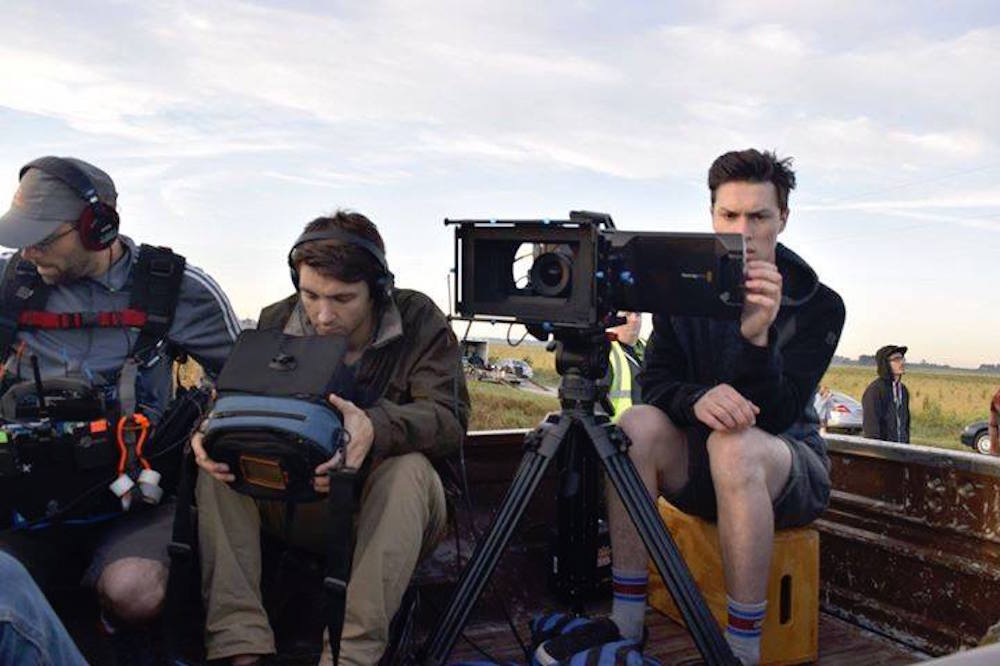Disclosure: We at MFM have determined this retrospective has objective valuable info for filmmakers, but do want to clarify that the writer of this article is associated with Blackmagic Design. Just because Blackmagic cameras were the right fit for this particular film doesn’t mean they will be the right fit for your film, so be sure to do your own tests and confirm which cameras and post will be right for you and your project. -JTH
In the new indie film The Things We’ve Seen, a struggling town is devastated when the local mill catches fire, eliminating most of the town’s jobs. Rayford Boem (Randy Ryan) is soon accused of arson by Sheriff Pascal (John D. Carver) but won’t go down without a fight and organizes an armed resistance. Soon, word of Rayford’s actions reaches his family, and his teenage son Reagan (Jarrett Maier) sets out to find his father and help fix what’s gone wrong.
“When we set out to make this movie, we knew that we had a big story to tell,” said Writer and Director Tre Manchester. “We didn’t want to let our budget dictate our ability to tell that story, so our goal was to still go big, but with small pockets. We were very careful with gear selection because we had a clear view in our minds of the look that we were going for, and we knew we needed cameras that could get us there without breaking the bank.”

Angles are key when telling a story; they can have an incredibly emotional impact on a scene when used creatively.
Shooting the Stand Off
The tensions between Sheriff Pascal and Rayford’s resistance result in a stand off between the two groups in the beginning of the film.
“This was a huge scene to shoot because we had so many things in play – not only were there hundreds of extras and special effects to coordinate with glass flying from the windows, but there were also complicated lighting scenarios to deal with due to the cop cars’ flashing lights and a mix of internal and external shots,” explained Turco.
Angles are key when telling a story; they can have an incredibly emotional impact on a scene when used creatively.
“The Blackmagic URSA gave us the stability we needed to get the handheld feel we were going for without being shaky. Similar to how we shot most of the film, we shot the scene with a two-camera setup, the Blackmagic Production Camera 4K as the B camera complementing the URSA, both mostly handheld. We also used the Blackmagic Pocket Cinema Camera to capture a high angle of the shootout scene, anchoring it to the roof to capture the action below,” Turco continued. “With a scene this big, you really don’t have any flexibility for a reshoot, so the cameras’ reliability was crucial.”
Having a camera that’s easy to understand and handle facilitates the filming process, especially when you’ve only got one chance to catch the shot.
“We didn’t waste a ton of time setting them up, and they were easy to maneuver for handheld shots, which was key when there are hundreds of folks waiting for us to yell ‘action!’”
“We shot a similar scene toward the end of the film that had multiple cop cars’ sirens flashing, along with spotlights streaming in and a porch light illuminating everything. The cameras played well with all those elements and were still able to capture the details in the shadows,” Manchester continued. “The cameras’ dynamic range really helped us capture what we needed in these complicated shots, and the color space fit perfectly with what we were trying to achieve in post.”

Having a camera that’s easy to understand and handle facilitates the filming process, especially when you’ve only got one chance to catch the shot.
Putting the Grit in the Film’s Gritty Look
“The Things We’ve Seen is a dark film, and we really wanted to mirror the heaviness of the story with the film’s overall look. Using DaVinci Resolve for color grading and some editing, we created a grittier, desaturated look that added depth to the film,” explained Manchester, who also served as colorist. “We shifted the shadows toward blue and the highlights and midtones toward yellow/orange, while boosting the overall contrast.”
“This was my first time working with a node-based system, and I was amazed by the level of control it gives you. It allows you to be really organized, and the versatility and usability is exactly what you want,” said Manchester.
Time is money as they say, making it critical that the tools you select for your project keep you organized and are beneficial on multiple levels.
“Even though it was a low budget film, we didn’t want it to have a low budget look, and the color grading capabilities, in conjunction with the cameras, really helped us achieve that.”
“It also was a time saver. Its editing features came in handy and really saved us time when we had to make quick fixes. We ended up cutting the trailers within the same program because it was just so intuitive,” concluded Manchester.
About “The Things We’ve Seen”
The Things We’ve Seen premiered in January 2017 and won Best Picture at the George Lindsey UNA Film Fest. It is continuing its festival run at festivals, such as the Worldfest-Houston International Film Festival and the Julien Dubuque International Film Festival, and it’s won six awards so far, including two for Best Feature, Best Actor and Best Actress. For more information, visit http://www.thingsweveseen.com.

1 Comment
Love the film, &the crew & cast. All worked like a well oiled clock. Magnificent.aja